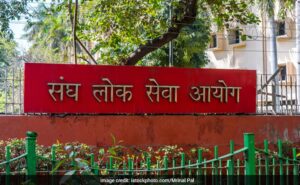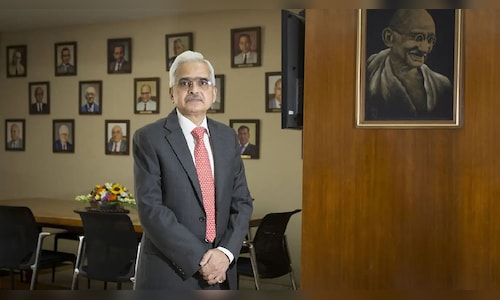
| Company | Value | Change | %Change |
|---|
Appointed amidst a leadership crisis at the RBI, when his predecessor Urjit Patel abruptly resigned nine months before his term was to end, Das quickly restored institutional harmony, emphasising collaborative decision-making. His tenure has been marked by critical reforms for the banking sector and the economy.
Under his leadership, the RBI introduced external benchmark-based lending, digital payment advancements like UPI’s international expansion, and initiatives for retail investor participation in government securities. His pragmatic approach to monetary policy, including managing inflation and liquidity, strengthened India’s financial resilience during global uncertainties. Das’ term is widely recognized for balancing growth and macroeconomic stability while fostering a forward-looking, technology-driven financial ecosystem.
Importantly, Shaktikanta Das steered India through the economic fallout of the COVID-19 pandemic, deploying a mix of accommodative monetary policy, liquidity support measures, and targeted interventions to stabilise the economy and credit markets through one of the toughest periods in our economic history.
Also Read: RBI Governor Shaktikanta Das remains an inflation hawk: Exclusive
Shaktikanta Das was awarded the central banker of the year for two successive terms at global forums for his steering the Indian economy through turbulent times defined by the pandemic, geopolitical challenges, and shifting global macroeconomic conditions.
As his six-year run at Mint Street comes to an end on December 10, here’s a look back at the top 10 big decisions taken under his leadership:
1. Stablising NBFC Sector In the Aftermath of IL&FS Crisis
When Shaktikanta Das assumed the role of RBI Governor in December 2018, the non-banking financial companies (NBFC) sector was grappling with the aftermath of the IL&FS crisis, which had exposed deep liquidity and governance issues in the sector. The crisis triggered a widespread loss of investor confidence and panic in the financial markets, particularly affecting NBFCs that relied heavily on short-term funding from commercial banks and capital markets.
Under Das’ leadership, the RBI took several key steps to stabilise the NBFC sector, restore liquidity, and build investor confidence. One of the immediate actions was the introduction of measures to ensure better access to liquidity for financially sound but liquidity-strained NBFCs. The RBI provided a special liquidity facility for these entities, particularly focusing on those with strong fundamentals but facing short-term stress. This move helped ease liquidity pressures and ensured that solvent NBFCs did not face undue financial distress.
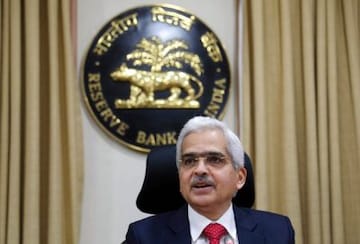
The RBI also tightened regulations to improve the governance and risk management frameworks of NBFCs. The central bank introduced measures aimed at enhancing the transparency and accountability of these institutions, including stricter norms for asset classification, provision coverage, and capital adequacy. These regulatory changes were designed to curb excessive risk-taking and strengthen the overall financial health of the sector.
“In 2019, we faced severe stress in the NBFC sector. Liquidity had dried up and there was a crisis of confidence in the financial markets. There were also certain instances of bank stress, both in commercial and cooperative banking sectors, in recent years. In all these exigent situations, the Reserve Bank took effective measures to stem the crisis from snowballing and restore stability and confidence in the markets. In parallel, we strengthened our regulatory architecture and supervisory vigil to proactively identify weaknesses and be future-ready. It is, therefore, appropriate to reflect on our experience during this period, not just – if I may say so – as a success story but, more importantly, to draw lessons for the future,” Das reflected on the time while delivering the keynote address at the CNBC-TV18 Global Leadership Summit.
2. Historic Rate Cuts to Support Growth & Pandemic Relief Measures
The RBI reduced the repo rate to a historic low of 4% (from 6.5% when Das assumed office) during the pandemic. This was part of a series of accommodative monetary policies to support growth amid economic challenges.
In March 2020, RBI allowed a moratorium on term loans and working capital facilities to provide relief to borrowers struggling with debt servicing due to the pandemic’s disruptions.
RBI also allowed banks to recalibrate working capital facilities to ease financial stress. This included reducing margins and reassessing the working capital cycle to provide temporary relief to borrowers. Additionally, these measures were designed not to lead to asset downgrades or reporting issues, ensuring that the borrower’s credit history was not adversely impacted.
To ensure liquidity in specific sectors, especially stressed sectors like MSMEs and NBFCs, RBI launched targeted long-term repo operations (TLTROs) in 2020. These operations aimed to inject long-term liquidity at lower rates, which helped banks pass on the benefits to borrowers in need.
“Monetary policy has completed a full cycle in the last six years – an easing cycle during 2019-22 and a tightening cycle of equal magnitude thereafter. We have used the flexibility embedded in flexible inflation targeting (FIT) to prioritise growth or inflation depending on the prevailing conditions and the outlook. For instance, when economic activity came under severe stress during the COVID-19 pandemic, we prioritised growth over inflation, cut policy rates and infused huge liquidity into the system. These measures were nuanced, keeping in mind the price and financial stability challenges that may arise in future. In addition, forward guidance during the easing phase complemented and reinforced monetary policy and liquidity measures. In parallel, appropriate regulatory measures, consisting of a moratorium on repayment of loans and resolution frameworks for stressed loans were also announced,” Das had remarked on RBI’s multiple relief measures introduced during COVID-19.
3. Promotion of UPI and Digital Payments
The RBI significantly pushed for financial digitisation, making UPI (Unified Payments Interface) a global case study. Initiatives like linking RuPay credit cards with UPI have expanded payment options for users.
The introduction of UPI 2.0 brought enhanced features such as overdraft facilities and linked credit accounts for users. Later, UPI LITE was launched to facilitate low-value transactions, which further boosted UPI usage in rural areas under Shaktikanta Das’ tenure as RBI Governor.
Under his Governorship, as part of expanding UPI’s footprint beyond India via the NPCI, the RBI engaged in discussions and piloted efforts to enable cross-border transactions via UPI, starting with neighbouring countries like Singapore and Bhutan. This marked a significant move toward making UPI a global payment method
In nearly every monetary policy announcement, UPI and ways to boost digital transactions nearly always found a mention in the statement on developmental and regulatory policies.
UPI transactions grew rapidly year-on-year, crossing significant thresholds. By 2019, UPI surpassed 1 billion transactions. Over the years, UPI has become central to India’s digital payment ecosystem. By mid-2024, UPI recorded over 14 billion transactions each month, with transaction values frequently crossing ₹20 trillion.
4. Tightening NBFC Regulations
After high-profile NBFC defaults like IL&FS and DHFL, the RBI introduced stricter regulations, aligning NBFC norms closer to those of banks to prevent systemic risks. RBI, under Das, introduced scale-based regulations for NBFCs to address the sector’s rapid growth while mitigating systemic risks.
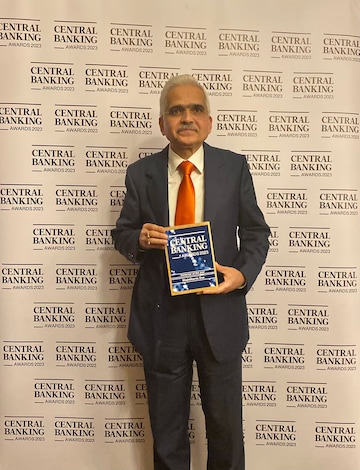
The scale-based regulatory framework, introduced in 2021, aims to streamline supervision by classifying NBFCs into four categories: NBFC-Base Layer (BL), NBFC-Middle Layer (ML), NBFC-Upper Layer (UL), and NBFC-Systemically Important (SIFI). Larger NBFCs are subjected to more stringent capital adequacy and governance standards to ensure their stability and minimize the risk of contagion during financial stress. This differentiation allows the RBI to apply more robust oversight and regulation for bigger players while offering smaller NBFCs more flexibility.
In addition, scale-based regulations provide a clear framework for entry and exit, facilitating smoother transitions and stability across the sector. Over time, these efforts have contributed significantly to restoring trust in the NBFC sector, especially in the aftermath of the IL&FS crisis, where several large NBFCs faced liquidity issues, thereby highlighting the need for more robust oversight mechanisms.
5. Overhaul of Cooperative Banks
Das undertook a significant overhaul of the governance framework for cooperative banks to address systemic vulnerabilities, particularly after crises such as the Punjab and Maharashtra Cooperative (PMC) Bank fraud. The PMC Bank scandal exposed serious governance and operational lapses, which highlighted the need for stronger oversight and regulatory measures within the cooperative banking sector. In response, the RBI enhanced its regulatory scrutiny over these institutions, introducing several reforms to strengthen their functioning.
Also Read: Exclusive | RBI Governor Shaktikanta Das: ‘Too early to talk about interest rate cuts’
One of the key measures was the introduction of a more robust supervisory framework, which included regular audits, stricter capital requirements, and improved management practices. The RBI also empowered its supervisory mechanisms, ensuring more stringent checks on governance, financial health, and compliance with regulatory norms. Additionally, the RBI introduced reforms to improve the transparency of cooperative banks’ operations, mandating regular disclosures to ensure stakeholders have a clearer view of financial stability and risk exposures.
6. Central Bank Digital Currency (CBDC) Pilot
Under his leadership, the RBI launched pilots for the Digital Rupee, as part of India’s broader effort to explore the potential of blockchain technology in the realm of digital payments and to enhance the efficiency, security, and inclusivity of its financial systems.
In November 2022, the RBI commenced the pilot for the Digital Rupee (CBDC) in the wholesale segment (e₹-W), targeting interbank transfers and the settlement of secondary market transactions in government securities. This was followed by a retail pilot (e₹-R) in December 2022, which was launched across select cities with the goal of expanding the scope of CBDCs for everyday consumer transactions. These pilots were designed to test the digital currency’s technological infrastructure, its operational framework, and how well it integrates with existing payment systems like UPI and IMPS.
The Digital Rupee pilots aimed to address several objectives. One key goal was to reduce reliance on physical cash, streamline payment processes, and improve the efficiency of monetary transactions. Additionally, the adoption of blockchain technology could enhance the security of digital transactions, providing a tamper-proof mechanism for recording transactions. The CBDC could also support financial inclusion by making digital payments accessible to a broader population, particularly in rural areas where access to banking infrastructure is limited.
Das emphasised that the CBDC could play a crucial role in optimising the monetary policy framework, offering a new tool for the central bank to manage liquidity and inflation. By allowing direct settlement between central banks and commercial banks, the Digital Rupee can enhance operational efficiency and potentially lower transaction costs compared to existing digital payment methods.
7. Overhauling Private Bank Ownership Rules
In 2021, the RBI under Das’s Governorship, introduced new guidelines aimed at reshaping the ownership structure of private banks in India, designed to encourage more diversified ownership and curb excessive concentration of control within a few entities. The new norms stipulated that the promoters of private banks must reduce their stake to below 26% within a period of 15 years, introduced restrictions on corporate entities from holding large stakes in private banks to reduce risks associated with cross-holding arrangements and related-party transactions, promoting transparency and accountability, among others.
8. Fintech Push and Digital Lending Rules
Under the leadership of Shaktikanta Das, the RBI significantly revamped its digital lending regulations to address the growing concerns around consumer protection, fraud, and transparency within the fintech and digital lending sectors. The revised guidelines, issued in 2021, sought to provide a more structured and safe framework for digital lending, which has seen rapid growth in India, driven by fintech startups and NBFCs.
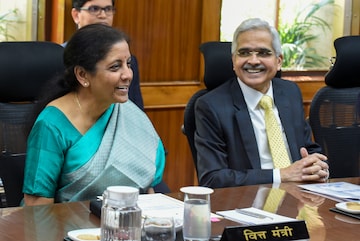
New Delhi: Finance Minister Nirmala Sitharaman (L) and RBI Governor Shaktikanta Das (R) at RBI central board of directors in a customary post-budget meeting, in New Delhi, Saturday, Feb 15, 2020. (PTI Photo/Atul Yadav)(PTI2_15_2020_000030B)
The RBI’s new rules mandated that all digital lending platforms must register with a regulated entity, such as a bank or NBFC, stipulated strict requirements for the protection of borrowers’ personal data, aiming to enhance consumer rights and safeguard against data misuse, emphasised the need for clear, upfront disclosures of all terms, conditions, and charges associated with loans, capped the First Loss Default Guarantee to 5%, introduced guidelines to ensure that digital lenders adopt fair and ethical collection practices.
Also Read: RBI Governor stresses balanced monetary policy to tackle inflation and drive growth
The RBI recognised the need for a Self-Regulatory Organization (SRO) to govern and oversee the rapidly expanding fintech and digital lending space and selected the Fintech Association for Consumer Empowerment (FACE) as the first Self-Regulatory Organisation (SRO) for the fintech industry earlier this year.
9. Regulatory Clampdown and Business Restrictions on Entities
RBI under Shaktikanta Das’s Governorship, adopted a tough, no-nonsense regulatory approach towards financial entities when it came to adherence with rules and regulations and customer protection. Under Das, the Reserve Bank of India took unprecedented action, cracking down on several financial entities, signalling a shift toward stricter compliance and consumer safety, driving home one message: compliance is non-negotiable. From HDFC Bank in 2020 to MasterCard and American Express in 2021, Bank of Baroda in 2023 and Paytm Payments Bank, IIFL Finance, JM Financial Products, Kotak Mahindra Bank, to Asirvad Micro Finance, DMI Finance, Navi Finserv and Arohan Financial Services in 2024- RBI took action wherever it felt compliance was lacking or found other issues that jeopardised customers’ interest.
10. Withdrawal of ₹2,000 Notes
The surprise decision to withdraw ₹2,000 denomination notes in May 2023 was executed smoothly, unlike the chaos during demonetisation. As of December 2024, the RBI has reported that 98.08% of the ₹2,000 currency notes, which were withdrawn starting in May 2023, have been returned to the banking system. Originally, about ₹3.56 lakh crore in ₹2,000 notes were in circulation, but this figure has been reduced to just ₹6,839 crore by the end of November 2024. The RBI has continued to facilitate the deposit and exchange of these notes at its branches and through India Post. While the withdrawal process has been largely successful, the ₹2,000 notes remain legal tender.



